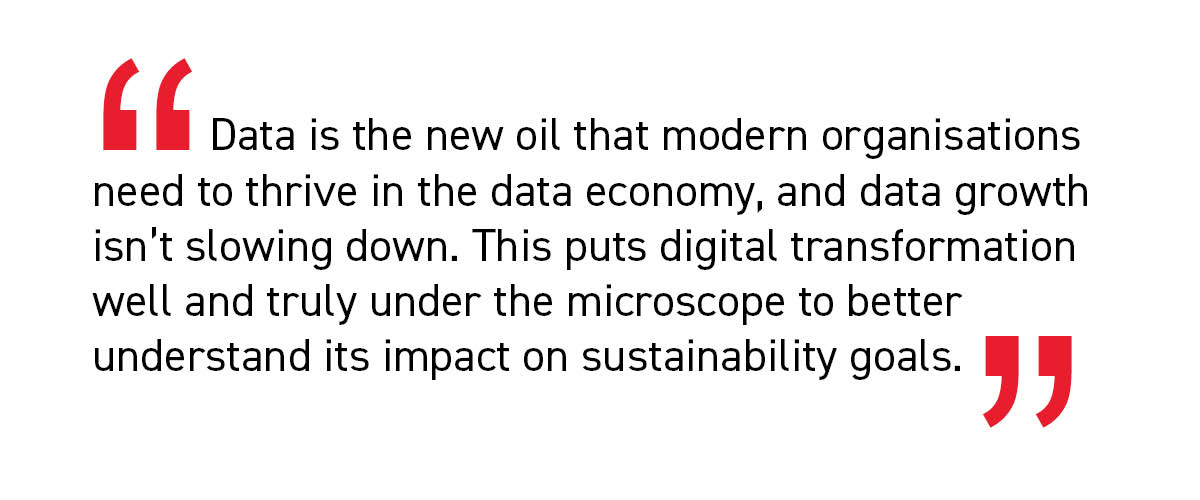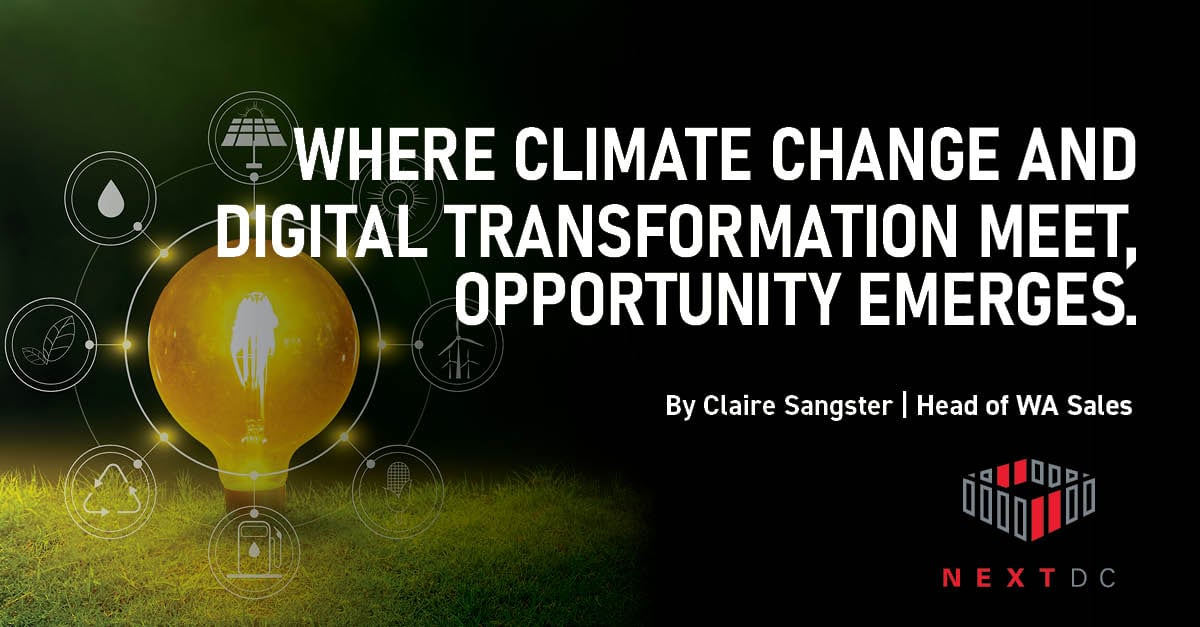By Simon Cooper, Chief Operations Officer
As our industry answers well-founded questions about growing carbon emissions associated with accelerating digital transformation, balancing environmental and social governance with continued growth and innovation becomes both harder and more important.
We didn’t inherit the planet when we arrived, we borrow it until it comes our time to pass it onto the generations that follow. Science continues to demonstrate that the climate is changing due to human industrialisation, and it’s the responsibility of all of us to reverse that impact by doing our bit to restore or preserve our natural environment for future generations.
Data growth carries a carbon debt
The acceleration of technology and growing volumes of data currently comes with a carbon debt which needs to be planned and accounted for. Data centres are the fastest growing source of carbon emissions in the economy. They already consume approximately 3% of the world’s electricity with forecasts estimating this will grow to as much as 20% by 2025.
Accounting for carbon emissions from your accelerating journey to the cloud should now be in every organisation’s three-year plan. For data centre operators, the race is on to build more energy efficient data centres, operate them at the lowest power usage possible, ramp zero carbon and renewable energy sources and use carbon offsets to balance the sustainability books.
Simultaneously, the Environmental, Social and Corporate Governance (ESG) policies of organisations are coming under increased scrutiny by regulators, investors, and customers. So, the time has come for organisations to better understand the carbon footprint of their entire operations and supply chains.

Choosing the right technology partners
It’s not easy to accurately account for the carbon debt of sprawling I.T architecture, but every organisation can make a difference by committing to being part of the solution instead of blindly contributing to the problem. Choosing the right technology partners is a critical first step in taking a giant leap towards the achievement of carbon neutrality objectives.
Increasingly, our hyperscale, enterprise and Government customers are taking a stance on sustainability and looking deeper at how seriously we apply sustainability best practice. Our commitment starts with designing, building and operating Australia’s most energy efficient facilities. Innovation in our data centres plus rigorous continuous improvement across everything we do, continues to ensure we set new power utilisation benchmarks.
When customers colocate their critical infrastructure in our facilities they share the benefits of these investments in sustainability. This includes facilities run at NABERS 5-Star ratings for energy efficiency, machine learning we have applied to years of operational data to tune the facilities in real time and the sponsorship of LaTrobe University PhD students driving new data centre efficiency research.
Achieving carbon neutrality for I.T
There has also been an enormous amount of work put into achieving carbon neutrality for our own operations. We achieved this by building a carbon offset program certified under the Government’s Climate Active initiative. Our NEXTneutral program is a low-cost, zero complexity carbon neutral solution that enables our customers to leverage the benefits of this program and offset the carbon emissions from the power consumed by their I.T infrastructure located in our facilities.
Technology’s power usage will continue ballooning in alignment with information growth, and potentially impede the pursuit of often aggressive sustainability targets. You just have to look at the groundswell of corporate announcements about transitioning away from fossil fuels, embracing renewables and adopting carbon neutrality by set dates, to see that ESG is a high-level strategic objective discussed at the boardroom table.
C-suite executives see the rising power bills and capital expenditure requirements for technology ballooning. As usage grows so too does the carbon debt needing to be negated while the cost of power becomes a targeted line item on both CIO and CFO ledgers.
It’s a big issue for our customers which means it is incredibly important for us to do what we can to help reduce the impact of digital infrastructure growth and increase the urgency for minimising and offsetting its carbon debt.
Removing complexity from carbon accountability
We know from our experience in developing NEXTneutral that the carbon debt created by data centres – privately owned facilities and colocation – is incredibly difficult to calculate. NEXTneutral moves the needle for organisations and by adopting a carbon neutral I.T strategy, it will serve to encourage other areas of your business to follow.
I have seen a significant shift in the industry over the last 12 months where large, very risk-averse customers are taking more responsibility for the carbon footprint that comes with extreme resilience planning. There are huge R&D investments being made to find innovative ways to support net-zero sustainability goals without compromising reliability and uptime objectives.
Our facilities, central operations and provisioning teams learn a lot from delivering and operating environments to the specifications of global tech giants and we continue to apply that knowledge as well as our own expertise to the practice of designing, building and operating data centres built upon the best sustainability practises in the world.
If sustainability is a priority for your organisation and your customers, then get in touch to find out how you can take a huge step toward achieving zero-net emissions for your I.T operations.


